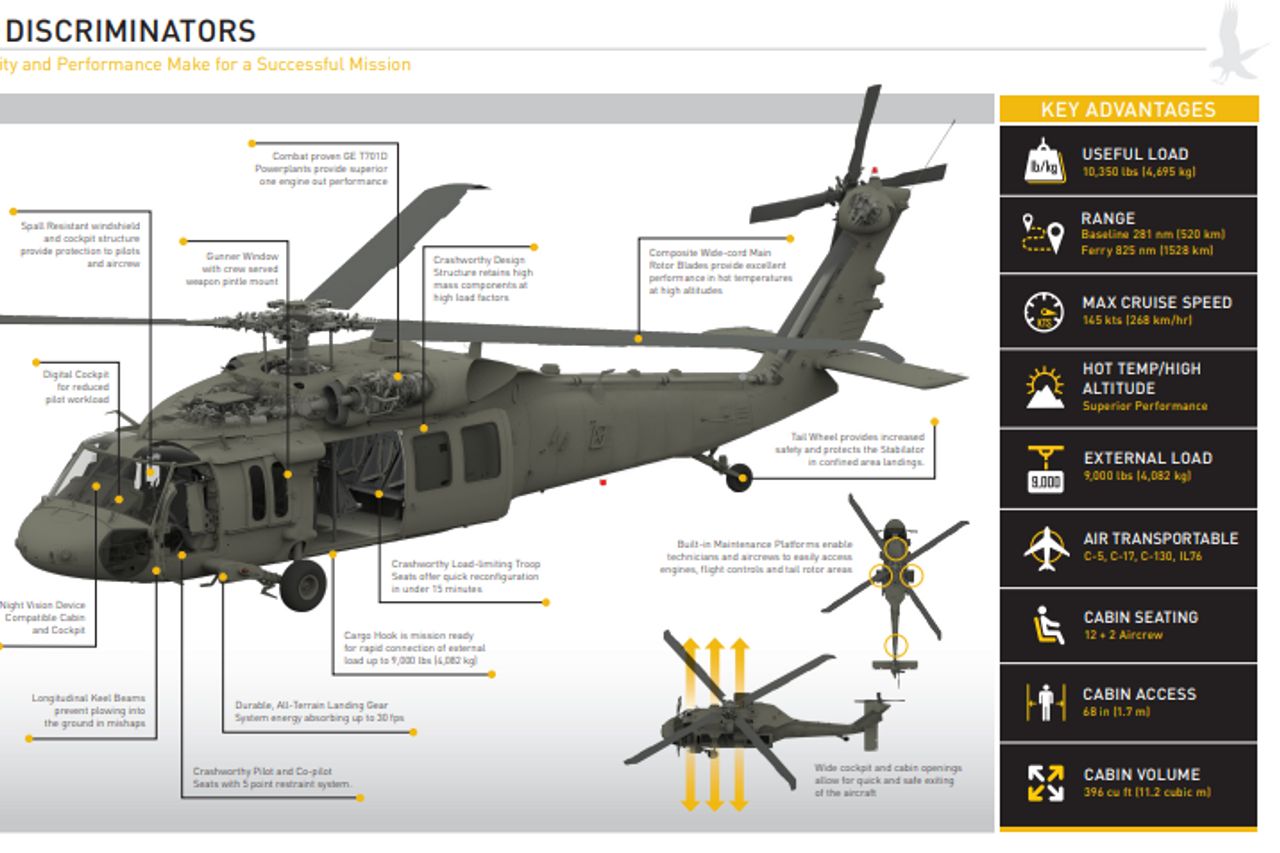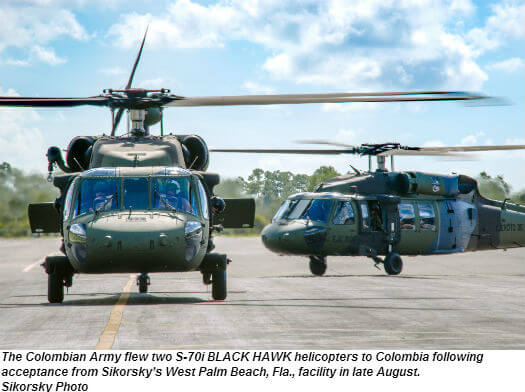A Take a look at the Sikorsky S 70's Function in Armed forces and Civil Aviation
Wiki Article
High-Performance Multi-Role Rotorcraft Featuring Advanced Cockpit Technologies and Integrated Sensing Unit Systems
The realm of rotorcraft modern technology has actually seen significant advancements in recent times, specifically in the world of high-performance multi-role rotorcraft outfitted with sophisticated cockpit technologies and seamlessly integrated sensor systems. In the complying with conversation, we will certainly check out the development of rotorcraft technology, dig right into the world of innovative cabin technologies, and analyze the effects of incorporated sensor systems on the operational convenience and effectiveness of modern-day rotorcraft.Evolution of Rotorcraft Innovation
The evolution of rotorcraft innovation has actually been noted by significant improvements in the rules of aerodynamics, materials, and propulsion systems, shaping the abilities and efficiency of modern-day rotorcraft. Aerodynamic enhancements have actually boosted the performance and maneuverability of rotorcraft, permitting raised speed, agility, and security throughout trip (sikorsky s 70). Technologies in products, such as making use of composite products and progressed alloys, have actually led to lighter yet more powerful rotorcraft structures, improving overall performance and sturdiness. In addition, innovations in propulsion systems, including a lot more powerful engines and ingenious propulsion modern technologies, have actually made it possible for rotorcraft to achieve higher altitudes, faster speeds, and higher payloads.These innovations have not only changed the capabilities of rotorcraft yet have actually likewise expanded their applications across various sectors, consisting of armed forces, commercial, and emergency situation solutions. The constant evolution of rotorcraft technology remains to drive technology in the area, pressing the boundaries of what is feasible and forming the future of upright flight.
Advanced Cockpit Innovations
Structure upon the foundational developments in aerodynamics, products, and propulsion systems, the realm of rotorcraft technology currently moves focus in the direction of pioneering Advanced Cabin Innovations. The combination of cutting-edge modern technologies within the cockpit environment plays a crucial duty in improving the operational capabilities, safety and security, and effectiveness of modern-day rotorcraft. sikorsky s 70. Advanced Cockpit Innovations incorporate a broad selection of functions designed to supply pilots with enhanced situational understanding, streamlined data monitoring, and intuitive control user interfacesOne of the key innovations in cockpit design is the application of glass cockpits, which replace traditional analog determines with high-resolution screens. These digital systems use customizable designs, real-time data combination, and enhanced readability, making it possible for pilots to access important details at a glance. In addition, progressed avionics systems, such as fly-by-wire controls and boosted truth screens, are transforming how pilots communicate with the aircraft, enabling accurate control and boosted decision-making abilities.


Including innovative cabin developments not only enhances pilot efficiency however also adds to total objective effectiveness and safety in intricate operational environments. By leveraging modern innovations within the cockpit, rotorcraft manufacturers are establishing brand-new requirements for operational excellence and objective success.
Integrated Sensor Solutions
With the evolution of rotorcraft modern technology, the combination of advanced Integrated Sensing unit Systems has actually ended up being extremely important in improving operational performance and safety. These Integrated Sensing unit Systems incorporate a large range of technologies that give essential information for various functions such as navigating, security, targeting, and environmental surveillance. By effortlessly incorporating sensing units like radars, cameras, lidar, and infrared systems right into rotorcraft, operators can take advantage of boosted situational awareness, improved goal capabilities, and minimized pilot work.One key benefit of Integrated Sensing unit Systems is their capability to gather real-time data and give actionable insights to pilots and objective drivers. Progressed radar systems can discover and track targets over long ranges, allowing for early risk discovery and effective feedback planning. Furthermore, incorporating electro-optical and infrared electronic cameras allows rotorcraft to conduct reconnaissance and surveillance goals with precision and precision.
Fundamentally, the assimilation of cutting-edge sensor technologies into rotorcraft not only improves operational performance yet likewise adds dramatically to general goal success and staff safety. As rotorcraft continue to progress, the role of Integrated Sensing unit Systems will most certainly continue to be at the center of advancement in the aerospace market.
Operational Versatility and Performance
Enhancing functional adaptability and effectiveness in rotorcraft is a natural progression from the assimilation of innovative Integrated Sensing unit Solutions. By leveraging the data and insights offered by these cutting-edge sensing unit systems, rotorcraft can enhance their efficiency throughout numerous objectives and environments.Functional flexibility encompasses the capacity of rotorcraft to adapt to various functions and scenarios successfully. With sophisticated cockpit technologies and integrated sensing unit systems, rotorcraft can perfectly transition in between tasks such as search and rescue, clinical evacuation, security, and much more. This convenience improves the rotorcraft's capacity to satisfy diverse functional demands without calling for comprehensive reconfiguration.
Efficiency in rotorcraft procedures is vital for taking full advantage of mission performance and resource utilization. Integrated sensing unit systems play a critical role in boosting operational performance by providing real-time data on weather, surface mapping, target tracking, and more. This information allows pilots to make informed choices promptly, optimize flight paths, save gas, and enhance general mission productivity.
Influence On Modern Aviation Operations

In addition, click here for more the combination of advanced sensing units assists in enhanced goal planning and execution, enabling rotorcraft to perform a vast array of tasks with enhanced accuracy. From search and rescue operations to airborne firefighting and legislation enforcement goals, the abilities of modern rotorcraft outfitted with sophisticated cockpit innovations and incorporated sensor systems are unequaled.
Additionally, the influence of these improvements extends past functional effectiveness to cost-effectiveness and sustainability. By enhancing flight routes, fuel consumption, and maintenance timetables, high-performance rotorcraft equipped with advanced cockpit modern technologies and sensors add to lowering operational expenses and ecological impact, making them important possessions in modern aviation operations.
Conclusion
Finally, the high-performance multi-role rotorcraft with sophisticated cockpit modern technologies and integrated sensor systems represents a substantial advancement in aviation innovation. These advancements boost operational versatility and effectiveness, eventually influencing modern-day aeronautics procedures in a positive method. The combination of these innovative modern technologies enables improved abilities and efficiency in different objective circumstances, showcasing the proceeded advancement of rotorcraft modern technology in the aviation market.The world of rotorcraft modern technology has seen notable advancements in recent times, particularly in the realm of high-performance multi-role rotorcraft geared up with advanced cockpit technologies and flawlessly incorporated sensing unit systems. From improved mission versatility to boosted functional effectiveness, the convergence of advanced cabin innovations and integrated sensor systems has actually ushered in a brand-new age of possibilities for rotorcraft applications. In the following conversation, we will explore the advancement of rotorcraft modern technology, dig into the world of sophisticated cockpit innovations, and check out the ramifications of integrated sensing unit systems on the operational flexibility and efficiency of modern-day rotorcraft.

Report this wiki page